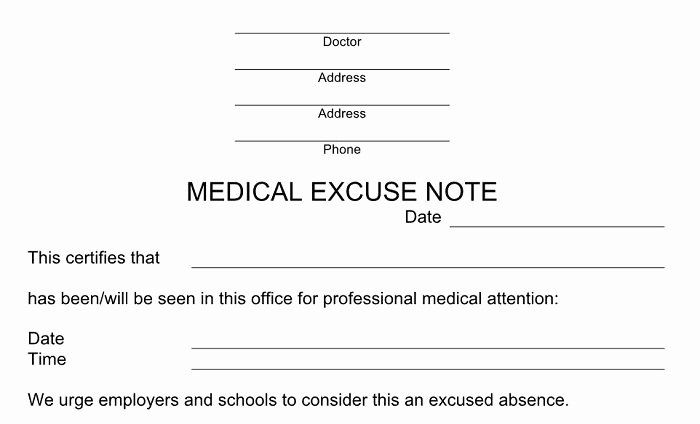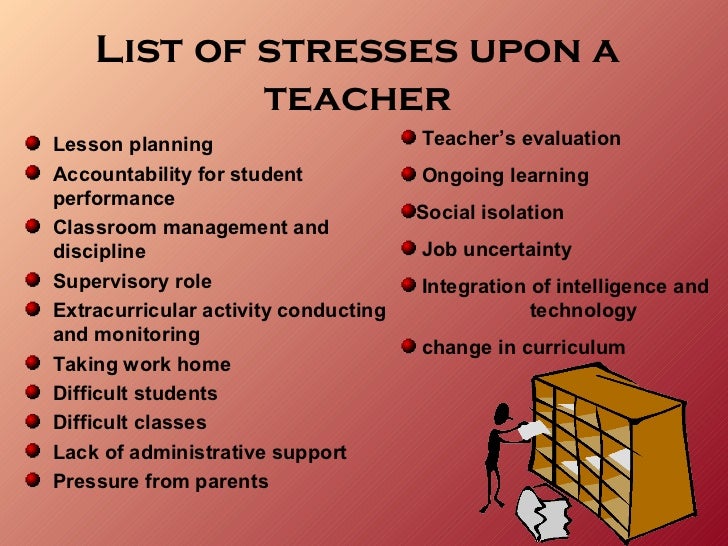Replace negative thoughts with positive ones
How to Turn Negative Thoughts Into Positive Actions
We've been through the wringer this past year and it's fair to assume that we've all had some dark moments. As an introvert, I have a running monolog in my head all day, constantly analyzing situations and other people’s words and actions.
I have to manage the floodgates, to stop negative thoughts ruling my day. Some days, it's exhausting. I'm still learning as I go.
I've struggled with negative thoughts my whole life. Sometimes I've looked enviously at other people who didn't seem to struggle at all.
However, it turns out that little voice in our heads is completely natural, whether you're an introvert or not. Some people have just learned to manage it.
Quiet the Negative Inner Voice
When our brain senses imminent danger, it triggers the release of stress hormones. Adrenalin and Cortisol help keep us safe in an emergency, but we're not running from saber-toothed tigers anymore, and too much of these powerful chemicals can make us ill.
Don't get me wrong, at times this little negative voice can actually be good, "No, I should not eat that entire packet of biscuits and call it breakfast."
That little voice can also keep us motivated toward goals. But, sometimes it says things like, "I'd never be able to do that," or "It's so obvious they all hate me."
Coping Under Negative Pressure
I remember my first time project-managing a huge and complicated web build for a client. I was out of my comfort zone, and every little hurdle triggered, "I'm really screwing this up" thoughts.
Those thoughts knocked my confidence and put me off my game, almost becoming an evil self-fulfilling prophecy. At times, I felt utterly paralyzed by them.
On the last day, once everything had gone live, our account director Neil called me into his office. My heart was in my throat, I was physically shaking as I sat down.
I was certain that he was about to confirm how I'd let everyone down. Just like I'd been telling myself all these weeks. Instead, he told me what an incredible job I'd done and how well I'd coped under all the pressure. He even apologized for not helping more.
Just like I'd been telling myself all these weeks. Instead, he told me what an incredible job I'd done and how well I'd coped under all the pressure. He even apologized for not helping more.
Perhaps those negative thoughts are always there, perhaps they come and go. Sometimes they're a day-ruiner. Sometimes, when they get out of control, you begin to realize that they're a life-ruiner.
Negative thoughts will fester and stop you going for promotions, jobs, friendships, relationships, adventures, and opportunities. They can stunt personal growth, cause us to make bad decisions, and drive us to become the worst versions of ourselves.
They can warp our perception of experiences and even cause us physical and mental damage, feeding mood and anxiety disorders.
I don't know about you, but the worse I feel, the less likely I am to take positive action. I sink into a pit. My sister Laura is a psychotherapist and told me to start writing down every single negative thought I had, as soon as I had them.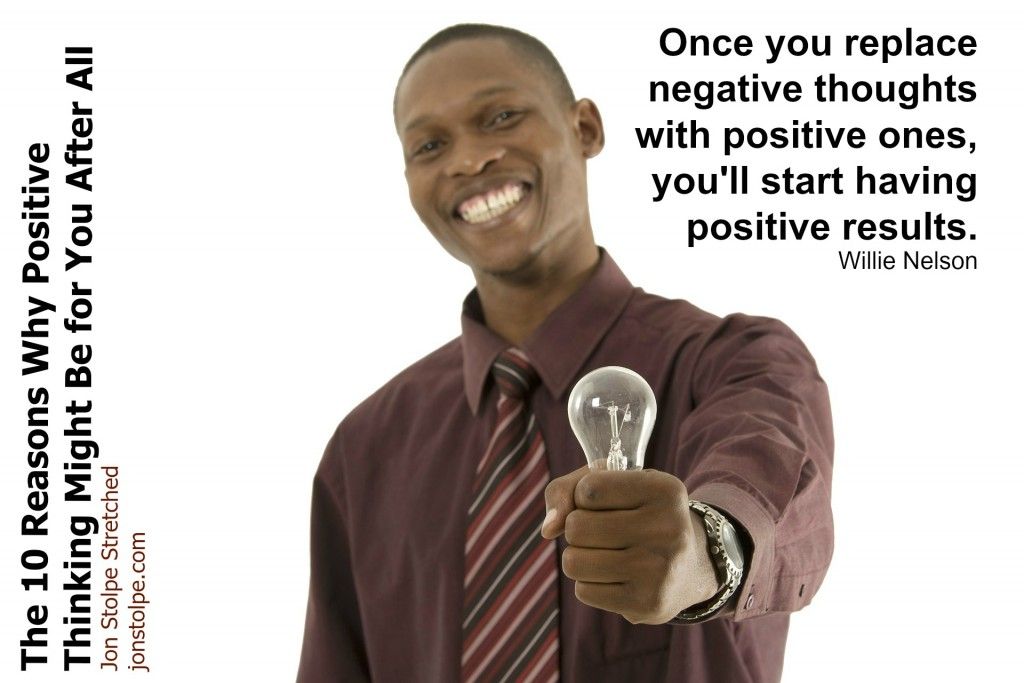 After a couple of days, I was horrified. It felt like I had no control over my brain; like I was poisoning myself.
After a couple of days, I was horrified. It felt like I had no control over my brain; like I was poisoning myself.
When talking with my friend Ellen about writing this blog, she told me that her negative thoughts have increased in strength and frequency since the start of the pandemic. That's understandable – we've all been working from home, with our personal spaces functioning as workspaces. We've felt bored, isolated, lonely and sluggish. All of which increase stress, anxiety and negative thought patterns.
It was Professor Steve Peters who coined the "Chimp" concept. We all have a Chimp, a part of our subconscious, with us since birth. It told us when to cry for attention. Now it tells us when to get angry at drivers who don't indicate.
It stored our emotional memories and tries to help us avoid emotional pain. The Chimp has its hand hovering above the big red button of anxiety, ready and waiting with a catalog of negative thoughts.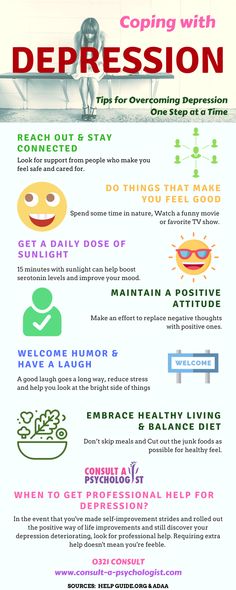
And because it pre-dates the development of our logical minds, the Chimp has cemented beliefs into our internal computers. They can take us over before our logical minds can reassure us that spending a whole afternoon watching Netflix does not mean we will never amount to anything.
Negative Thoughts Can Take Many FormsThe thing about negative thoughts is that they don't usually reflect reality. In the 1960s, U.S. psychiatrist Aaron Beck recognized specific patterns to negative thinking, which he called "Cognitive Distortions" or "Distorted Thinking."
They're common, entirely normal, and not our fault. Beck's pioneering research formed a central part of his cognitive theory of depression and, later, Cognitive Behavioral Therapy (CBT).
Since then, researchers have developed his ideas and identified at least 10 common distorted thinking patterns. Below are some examples from my own life – how many sound familiar?
1.
Polarized ThinkingWhen I was in high school and thought, "If I don't get straight As, I've essentially failed. "
"
2.
OvergeneralizationWhen I went through break-ups and told myself, "This always happens, I'll never find anyone," or when I burn the fishfingers and think, "Why does nothing ever go right?"
3.
Mental FilteringWhen I was a year into having started my own business and filtered out the fact that I'd managed to achieve that, had wonderful clients, great friends, and a supportive partner. I was only focusing on why I wasn't yet making £x p/a.
4.
Discounting the PositiveWhen I was in a slump last Tuesday and caught myself saying, "Yes, I might be a decent copywriter, but anybody can learn how to do that."
5.
MindreadingWhen my partner introduced me to his friends and I spent the entire journey home thinking, "They all hate me, I told that stupid story and now they all think I'm boring." A couple of hours later he showed me their group chat, where everyone had been singing my praises.
6.
CatastrophizingThe time a client of mine hired a full-time writer and I lost their business and automatically assumed, "I'm going to lose all my other clients, then I'll have to move out and live in my parents' shed."
7.
Emotional ReasoningThe time my ex-manager, Steph, suggested I go for a copywriting position, and I thought, "I'm so worthless, there's no point in even trying – I'd never get the job anyway." Spoiler: I got the job.
8.
"Should" StatementsWhen I'm rigid with my ideas about how I should and shouldn't be spending my free time, "I should be getting up early to start every morning with yoga." I then feel anxious and blame myself when I'm too tired to manage it.
9.
LabelingThe time I assumed that my ex-colleague Lara was a horrible person because she was a bit "short" with me when we first met. Spoiler: she was just having a nightmare Monday and we became really good friends.
10.
Personalization and BlameWhen my ex-boss Jo used to look annoyed and I'd instantly shrink into myself and think, "I must have done something wrong, I can't do anything right."
NOTE: If you're constantly experiencing negative thoughts, it's important to seek advice from a mental health professional. People suffering from depression and anxiety often experience destructive thoughts, that can become incessant and painful.
12 Tips to Turn Those Negative Thoughts Into Positive ActionsIt was only when I was first getting to know my partner Leo, and he said, "It feels really great to be around a positive person all the time," that it hit home. My efforts had turned into habits.
Over time, due to the process of neuroplasticity, habitual negative thinking patterns wear such a path that they become physical neural traits in your brain. Scientists say that our brains are always looking to make habits because they're always looking for ways to save effort.
But a habit cannot be eradicated; only replaced. You have to go back to the very beginning of the stimulus/response cycle and replace the current response with a different one.
How many times have you listed all the positive steps you're going to take, then not acted on them? That's because the longer you think about doing something, the less likely you are to do it. Negative thoughts will talk you out of it.
Don't make negative thinking a lifelong habit. Here are some tips for getting your brain and mind to work with you. Your actions will prompt more positive thinking too!
1.
Start a JournalAcknowledge negative thoughts, don't try to push them away. You want them resolved, not buried like seeds, ready to rear their ugly heads again. Every day, I record every negative or positive thought, where it happened, why it happened, and who it happened with. It helps me identify triggers and turn negative thoughts around next time.
2.
 Always Ask Yourself, "What Would I Say to a Friend?"
Always Ask Yourself, "What Would I Say to a Friend?"We tend to find it easier to be kinder to others than ourselves. There's a simple exercise developed to aid children in reframing cognitive distortions, teaching them to recognize "BLUE" thoughts – Blaming myself; Looking for the bad news; Unhappy guessing; and being Exaggeratedly negative.
It also works for adults. Turn those "BLUE" thoughts into true thoughts by imagining that your friend has this problem. You'd probably reassure them. What advice would you give?
3.
Say "Stop"Becoming aware of your Chimp and its patterns takes time. When you spot it, say "Stop," out loud, and tell the Chimp how to behave.
4.
Change Negativity to NeutralityIt's a lot easier to turn down negativity than switch it off. Ask yourself, "Is this thought helping or hindering me in my journey to become my best self?" If it's hindering, be gentler with your language. For example, change, "This is impossible," to "Let's try a different approach." Interestingly, when you do this, your brain will come up with answers to your questions.
For example, change, "This is impossible," to "Let's try a different approach." Interestingly, when you do this, your brain will come up with answers to your questions.
5.
Create an SOS File of Positive PraiseI compile positive emails and comments from clients and friends, to dig out when I'm feeling insecure. Some days it's a lifesaver. I'm always pleasantly surprised at how quickly I bounce back.
6.
BreatheIn the words of Mr Miyagi, "When you feel life is out of focus, always return to the basic of life. Breathing. No breath, no life." Every day, I use the 4-7-8 breathing technique that NAVY Seals use. You can do it throughout the day for maintenance, or as an SOS. It'll quickly get you into a calmer state, where you can be more rational.
7.
Talk to SomebodyWhether it's a therapist, close friend, or colleague, with an understanding of the exact boat you are in. As long as it's someone supportive, who will identify the positives, and put any negative thoughts into perspective.
8.
Follow a Healthy LifestyleI do three 10-minute workouts daily. Exercise positively affects mood and reduces stress. I'm also thankful that my dog Colin gets me outside. More oxygen to the brain improves concentration and memory. Exercise can also lower blood pressure and releases chemicals in the brain that help you feel happier and more relaxed.
9.
Identify Areas to ChangeWhich areas of your life do you most often think negatively about? Perhaps it's work, a relationship, your downtime. Start by focusing on one small area and on how you can approach that in a more positive way.
10.
Surround Yourself With Positive PeopleNegative people will likely increase your stress levels, make you doubt your abilities, and make it harder to manage negative thinking in healthy ways. Instead, seek supportive people who you can depend on to give grounded advice and feedback.
11.
Practice Self-CompassionIt's taken me years, but it's never too late to begin.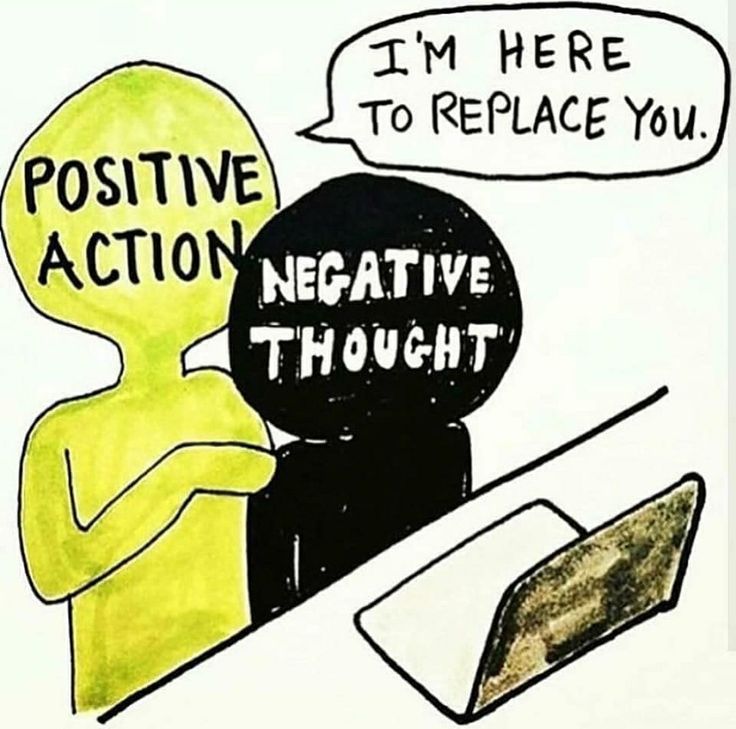 Tara Cousineau's 2017 book, The Kindness Cure points out that self-criticism just makes you feel stuck. But, she says, replacing disapproval and self-judgment with self-compassion allows you to accept in a gentle way that you are flawed – strengthening your mental wellness.
Tara Cousineau's 2017 book, The Kindness Cure points out that self-criticism just makes you feel stuck. But, she says, replacing disapproval and self-judgment with self-compassion allows you to accept in a gentle way that you are flawed – strengthening your mental wellness.
12.
Practice Positive Self-Talk Out LoudUse your name, not "I." Creating emotional distance in our self-talk can help to calm us down, see things more clearly, and think more rationally, according to University of Michigan psychologist Ethan Kross.
"Stop," Breathe and Be Kind to Yourself
A few weeks ago, I was so tired by the end of Friday that almost all my weekend plans quickly flew out the window. I saw a friend for breakfast the next day, but there was not a lot of anything else. By Sunday night, my brain was awash with negative thoughts, "I've wasted the whole weekend."
So, I told myself out loud to, "Stop." I practiced some 4-7-8 breathing and thought about what I'd say to my friend Sarah if she were in this position.
I could feel my heart rate slow back down to normal as I began to reframe negative thoughts into more caring ones, "It's OK, you needed the rest. Perhaps you worked a bit too hard? Let's think about how you can practice some more self-care." I felt calmer, lighter, and more clear-headed.
Positive Impact of Positive Change
It was a bit of a wake-up call. Now, I'm stricter about when my working days end, and I don't feel so burned out by the weekend.
I've stopped skipping lunches on busy days and started eating healthier food. I feel more creative and confident at work and have the energy to exercise daily and use my free time in a reinvigorating way.
Take it from me – and countless scientists and therapists – changing how you behave will help you to change how you feel. Changing your thoughts will physically alter your brain over time.
Realistic thinking will eventually become second nature, as your brain starts to view you and your talents fairly.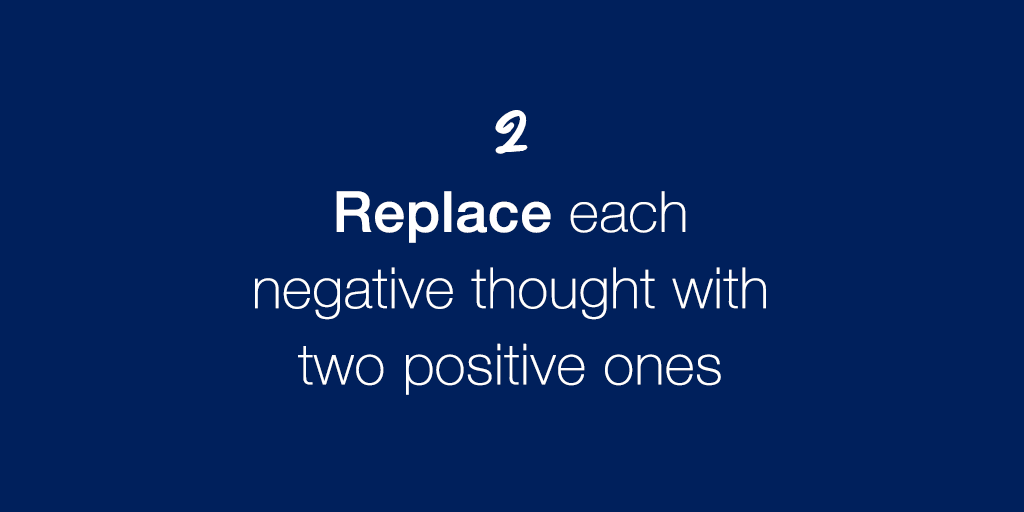 Maintain positive actions, and you'll soon notice your confidence increase – along with your achievements and opportunities.
Maintain positive actions, and you'll soon notice your confidence increase – along with your achievements and opportunities.
Which negative thoughts do you struggle with most? How have you been coping? What actions are you going to take today to turn negative thoughts into positive action, and create real change? Let us know your thoughts and experiences in the Comments section below.
How to Replace Negative Thoughts: 7 Ways
Negative or unhelpful thoughts are often automatic, but they don’t have to take control of you. With a few pointers, you can learn to tolerate your inner critic without getting bogged down by it.
This is Part 3 of a three-part series about how to deal with negative thoughts. Part 1 talks about how to become aware of them. Part 2 is about how to let them go. Part 3 (this article) discusses how to work with, or “replace,” unhelpful thoughts with positive ones.
In this article, you’ll learn the final step in this process: how to work with unhelpful thoughts and toward more balanced, realistic, and helpful ones. There are several ways to do just that, from therapy to journaling exercises.
There are several ways to do just that, from therapy to journaling exercises.
When you’re ready to start facing your unhelpful thoughts, the two-column exercise is a great place to start.
First, pull out a journal and create two columns. On the left-hand side, write out all your current negative or unhelpful thoughts. Don’t overthink them. Just jot down as many as you can.
In the right-hand column, write between one and three counterarguments. This can help you get some distance from the part of the mind, or inner critic, coming up with the automatic thoughts, and “You” observing those thoughts and doing the healing work.
Consider writing your unhelpful thoughts in quotation marks. This might help you start to view them as thoughts, like the hundreds of other thoughts that run through your mind each day, rather than absolute truths.
This exercise in action may look like:
| Unhelpful thought | Helpful thought |
“This is too hard for me. ” ” | This is new, and I am learning. |
| “I am the worst at this.” | I’m not the best at it, and I’m not the worst either. I am somewhere in between. |
| “I’m a bad person.” | I have value. That’s something I would tell someone I care about. |
| “I made a massive mistake and everyone saw it. “ | I had a human moment. Even if someone noticed, I know they’ve made mistakes too. No one will remember tomorrow. |
| “I can’t do this.” | I can do this, but I might need to step back and take a breather first. |
| “I am not good enough.” | I am good enough; it’s just that my imposter syndrome is making me feel like I’m not. |
| “Nobody likes me.” | I am loved by my friends, my partner, my parents, my pets… |
| “I’m alone.” | I’m not alone; I have myself. |
| “I’m a failure.” | If I didn’t make that mistake, I wouldn’t have known how to grow.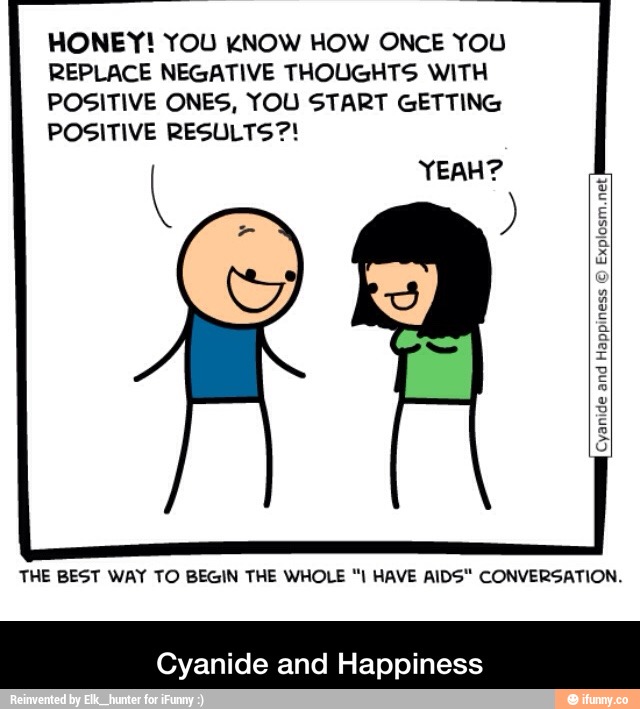 I know what to do differently next time. I know what to do differently next time. |
| “I’m having a breakdown.” | This feels like a breakdown, but it might be part of a breakthrough. |
When you’re done, consider hanging some of your positive thoughts in a place where you’ll see them, like a bathroom mirror or a Post-it note on your desk.
Unhelpful thoughts, in part, come from accumulated evidence in our mind. We’ve learned important things about the world around us — and ourselves — based on prior experiences.
But if you find yourself believing that your unhelpful thoughts are true, it’s time to find some new evidence.
World-renowned marriage expert John Gottman recommends that for every negative interaction we have with a partner, we should aim for five positive interactions. This magic ratio may be a helpful approach try in your relationship with yourself.
Set a timer on your phone for the same time every day. When it goes off, name five things, either in your mind, out loud, or on paper, that you appreciate about yourself or the work you’ve done.
Self-compassion is a powerful tool for building a positive relationship with yourself.
Instead of beating yourself up for having harsh self-criticisms, try taking a step back and recognizing that your inner critic is, in a counterproductive way, trying to keep you safe by warning you of some possible danger that it perceives.
Next time self-criticism is feeling overwhelming, you might try showing compassion to your inner critic, thanking it for its efforts in trying to keep you safe, and then trying out some strategies for giving yourself compassion instead of beating yourself up.
You can learn more about how self-compassion can help you work with your inner critic by reading the work of Dr. Kristin Neff, a pioneer of self-compassion research and professor of educational psychology, here.
Our unhelpful thoughts often contain hidden invitations for action. The call-to-action journaling exercise may help you feel more empowered. It looks like this:
| Unhelpful thought | Call-to-action |
“This is too hard.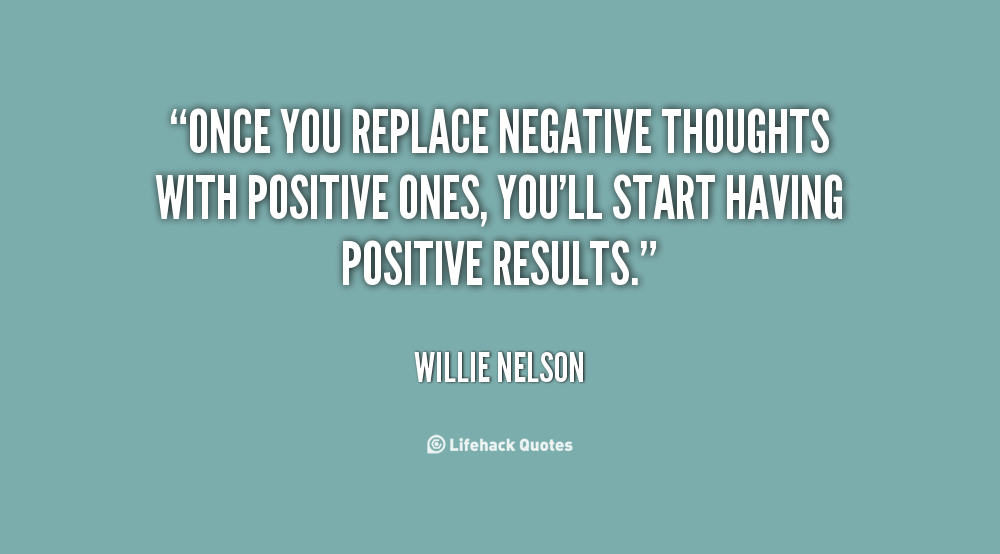 ” ” | Who do I know that can help me do this? |
| “I am the worst at this.” | What tutorial can I watch to improve my skill set for this project? |
| “I made a massive mistake and everyone saw it.” | Whose mistake do I remember from last week, and do I think less of them for it? |
| “Nobody likes me.” | Who can I call right now, who makes me feel accepted? |
| “I am never going to find a job.” | What workshop can I take to make my resume more impressive? |
As a general rule, try to identify call-to-actions that are small, achievable baby steps. Setting major actions that take a lot of energy or time can be off-putting and might have the opposite effect.
When you catch yourself thinking an unhelpful thought, ask yourself:
- Would I say this out loud to someone else?
- Would I say this to a child?
- Would I let someone speak that way to my child?
Sometimes just imagining someone else’s face if they heard what you’re thinking can make a difference.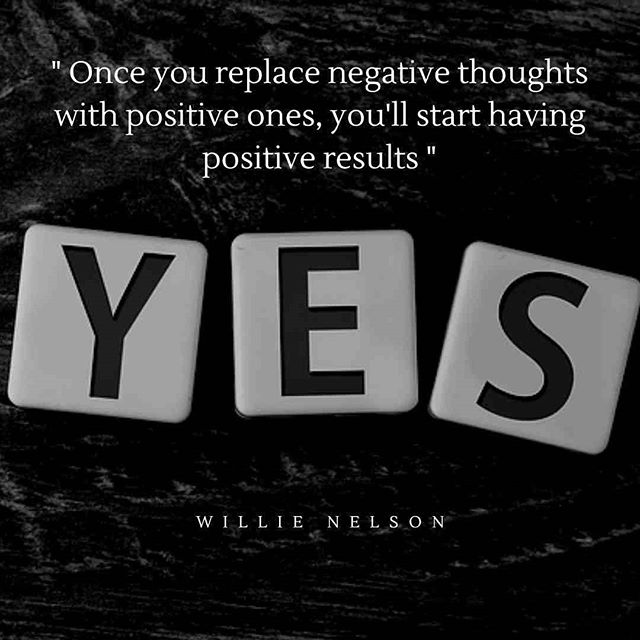 This may help you shift your language to something more loving.
This may help you shift your language to something more loving.
Sticking up for yourself out loud may feel good, too. You can say to yourself, “Hey, I don’t like how you’re talking to me, brain. That’s enough out of you. I’m done.”
On top of your negative or unhelpful thoughts, you may feel bad about having these thoughts to begin with — a vicious cycle. This creates a resistance to your present experience, which can make your internal suffering that much worse.
As Buddhists say, surrender. If you see an unhelpful thought arise, just notice it there. Take a pause. Try your best not to push it away. Ask yourself, Can I allow it to be here?
Kyle Cease, a comedian turned spiritual thought leader, recommends that people add “and I love that” onto every unhelpful thought.
- I failed my test… and I love that.
- I can’t find a date… and I love that.
- I will never be enough… and I love that.
It’s an exercise in radical self-acceptance, and may even infuse a bit of humor into the situation. As your nervous system recalibrates and you adjust to this sense of surrender, you may find that the unhelpful thought dissipates on its own.
As your nervous system recalibrates and you adjust to this sense of surrender, you may find that the unhelpful thought dissipates on its own.
Much of our mindsets are programmed in our early childhood and in our evolutionary underpinning. Yet, you may not even know what kind of messages drive your subconscious mind.
It may help to enlist the help of a trusted therapist. Not only can they provide a warm, caring place to talk about your feelings, but they’re trained to spot patterns that you may not be able to pick up on.
A 2021 study involving 91 adults with anxiety, depression, or PTSD found that cognitive behavioral therapy (CBT) helped improve repetitive unhelpful thinking patterns, like brooding, rumination, and worry.
Everyone has unhelpful thoughts, some more than others. But, like any other habit, the more you practice turning those thoughts around, the easier it may become.
True transformation comes from consistency. Practice these tips a little every day and, over time, you may hear your whole inner dialogue change course.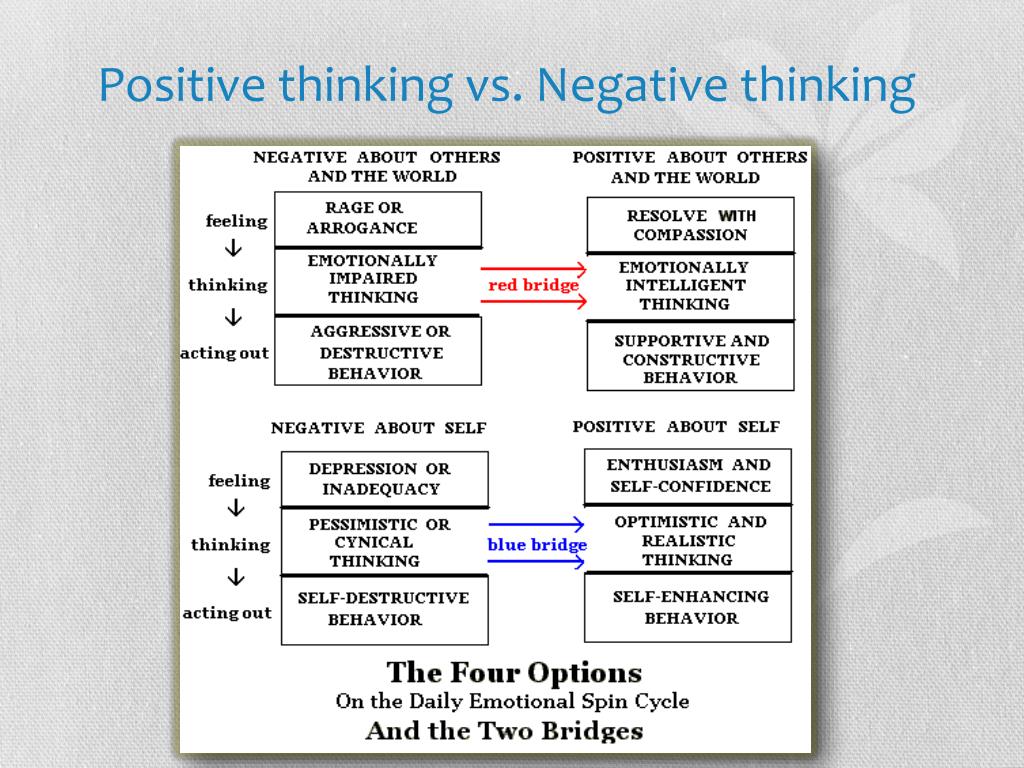
Remember: You are not your thoughts, and you don’t have to be owned by your thoughts.
To continue the inner work, you may find it helpful to read some of these books:
- “What to Say When You Talk to Yourself” by Shad Helmstetter, PhD
- “The Mindful Self-Compassion Workbook” by Kristin Neff, PhD, and Chris Germer, PhD
- “Get Out of Your Mind and Into Your Life: The New Acceptance and Commitment Therapy” by Steven C. Hayes, PhD
- “The Happiness Trap: How to Stop Struggling and Start Living: A Guide to ACT” by Russ Harris
- “The Negative Thoughts Workbook” by David A. Clark, PhD
- “The Brain That Changes Itself” by Norman Doidge, MD
- “The Dialectical Behavior Therapy Skills Workbook” by Matthew McKay, PhD; Jeffrey C. Wood, PsyD; and Jeffrey Brantley, MD
How to change your thinking and make your life better
September 18, 2021Motivation
Love failure, stop being a hostage of situations and believe: everyone can win.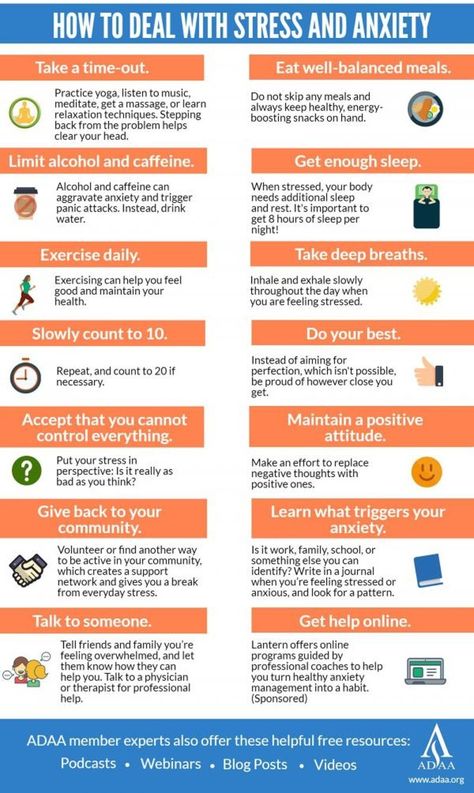
Share
0You can listen to this article. If it's convenient for you, turn on the podcast:
Often the obstacles that prevent us from achieving our goals or becoming better are only in our head. Consciousness determines how we behave in difficult situations, whether we cope with fear, succeed or fail. Therefore, it needs to be changed.
How to think positively
Negative thinking prevents us from reaching our goals. Every opportunity is seen as a threat, as a harbinger of failure. Past failures do not give rest, focusing on them does not allow moving forward. Everything was bad and will be bad.
Positive thinking works in reverse. Everything that gets in the way of the goal becomes another opportunity to achieve it. If for a negative thinker, failure is an obstacle that cannot be overcome, for a positive thinker it is an experience from which one can and should benefit.
A simple but illustrative example. A hole in your favorite jeans for one is a reason to throw denim in the trash. For another, it's an opportunity to try your hand at being a designer and turn old pants into a frayed fashion item.
A hole in your favorite jeans for one is a reason to throw denim in the trash. For another, it's an opportunity to try your hand at being a designer and turn old pants into a frayed fashion item.
So, first of all, you need to think positively.
1. Learn to have an internal dialogue
Say to yourself: “I can do better”, or “Next time I will do better”, or something similar. According to a recent study, this is an effective way to increase productivity and start putting more effort into solving a task.
The main thing is to believe in what you say. After all, this is not magic, but hard work on oneself.
2. Turn negative thoughts into neutral ones
Don't torture yourself trying to make bad things good in a second. Go to it gradually.
3. Realize that your negative thoughts are just thoughts.
Often our worries have no basis. Think about whether yours have a real reason.
How to stop being afraid of failure
How many great projects have died at the idea stage because of someone's fear of failure in implementation? If every inventor was afraid to make mistakes and gave up the idea, you would hardly be reading this article from the screen of a smartphone or laptop, driving to work and enjoying other benefits of civilization.
1. Remember: failure means that you do not stand still
Those who do nothing do not make mistakes. If you fail, this is a sure sign that you are moving towards your goal.
2. Treat failure as an experience that helps you get better
Chances are you won't repeat the mistake again. You will discover your weaknesses and do it differently next time. What if it doesn't work again? So you will gain experience again. And so on until you get where you want to go.
Every failure is a valuable lesson.
Ask yourself:
- What have I learned from this situation?
- How can I benefit from it?
- What are the positive aspects of it?
You will see that everything can be useful.
3. Don't identify failure with yourself
Don't think you're a failure because you make mistakes or fail at something. You would be if you didn't learn from it and stop for fear that the situation would repeat itself.
4. Prepare for difficulties and decide how you will cope with them
Scientists have found that positive attitudes alone are not enough to cope with the negative.
Subjects were asked to imagine the next week. The first group had to think exclusively positively, and the second - as it sees fit. It turned out that people who saw a great future were then less energetic and did less than the rest.
The balance between positive thoughts and readiness to deal with difficulties is more effective than one optimistic attitude.
5. Focus not on the problem, but on its solution
Thinking about a problem takes energy and time, which are better spent on solving it. Don't think about failure, try to prevent it. This will not only relieve you of unnecessary stress, but also help to identify weaknesses.
How to Develop a Growth Mindset
Fixed mindsets put themselves in a box. They are sure that it is impossible to change and develop talent in themselves, and when faced with difficulties, they experience a feeling of helplessness and hopelessness.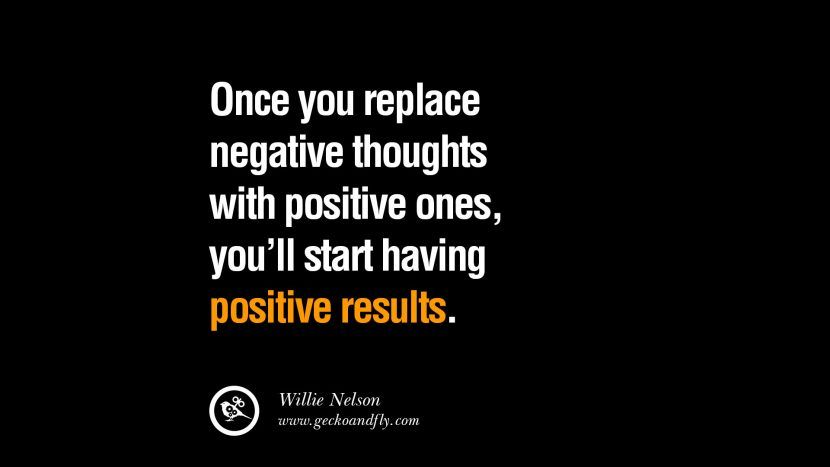
Growth mindsets believe that they can become better, strive to develop and learn new things. And all that they have is just the beginning, and they can achieve more. They just know how to see an opportunity in failure and perceive it as an experience that will be useful to achieve the goal.
1. Change the attitude towards failure
When you learn to accept failure as part of your path to success, this very path will become easier, and your chances of reaching the end will increase.
2. Get ready for the challenge
If you used to walk along a straight path along the field, now you have to climb to the top of the mountain. And it's not easy.
3. Focus on personal growth and development
Take an interest in things you don't know. Do more than before. Raise the bar, don't stop there. Stop accepting your knowledge and skills as something permanent that comes with you. Instead, imagine that you are a vessel that is only a third full, and there is much more to learn.
4. Be persistent and purposeful
If you give up, you will return to the beginning and again become a hostage to fixed thinking. Think about what work has already been done.
How to tune in to the abundance mindset
People with a scarcity mindset think there aren't enough resources for everyone. Stephen Covey draws an interesting analogy in Being, Not Seeming.
Stephen Covey
American business expert.
Scarcity thinkers are convinced that there is only one pie in the world and that if someone takes a piece, they will get less. This attitude leads to win/lose thinking: if you win, I lose, and I can't let that happen.
Abundant mindsets believe that there are many pies and no losers: everyone wins and gets a piece (or more than one).
1. Think about what you have
Concentrate on that. Material or non-material things - it does not matter. You need to learn to think abundantly and be grateful for what you have.
2. Share
Knowledge, for example. Or take part in a charity event. If you can share something, then you have it in abundance.
How to think proactively
Those who think reactively depend on external factors. They do not play an active role in life, but simply go with the flow.
People with proactive thinking do not blame the situation or others if something goes wrong, but take responsibility for their lives. They know what they can change and what they can't, and they focus on the former.
1. Take Action
Get out of the passenger seat and take control of your life. Instead of saying "The weather is too bad to go for a run," say "It's raining outside, but it's dry at home. So I can do other exercises."
The point is to stop being a hostage to situations and act regardless of what is going on around you.
2. Get rid of reactive thinking phrases
Forget about:
- I can't because...
- If I could, I would.
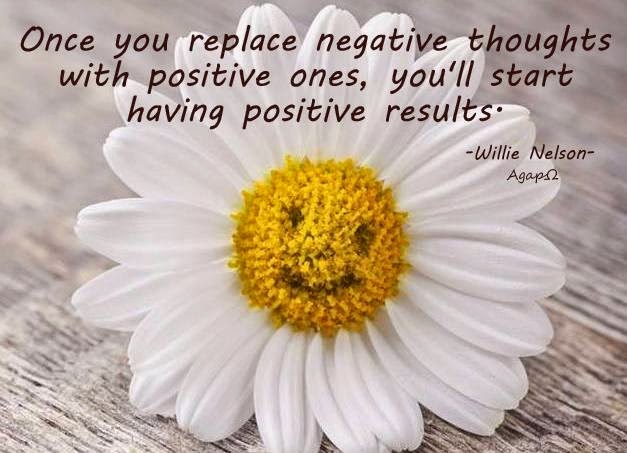
- I had to...
- That's how things happened.
And try:
- I'll find an alternative.
- I can do it.
- This is my decision.
- I want it myself.
3. Take responsibility for your life
Don't waste your time and don't get angry when things don't go according to plan. Did the bus arrive on time? Get out early, take a book with you so as not to waste time, turn in your license and save up for a car, but do not become a victim of circumstances. Let them work for you.
No one promised that it would be easy and fast. But who, if not you, will help you become better and succeed?
Read also 🧐
- How to make the brain think positively
- 12 ways to change lives for those who have absolutely no strength
- 2 words that prevent you from changing your life for the better
5 exercises that will help you learn to think positively
Surely many of you have already heard more than once about the benefits of positive thinking. But what does this really mean? And how to completely get rid of negative thoughts? Few people really understand this. In this article, we will look at the benefits of positive thoughts and exercises for practicing positive thinking.
But what does this really mean? And how to completely get rid of negative thoughts? Few people really understand this. In this article, we will look at the benefits of positive thoughts and exercises for practicing positive thinking.
Positive thinking benefits not only the psyche and intellect of a person, but also his health. What are the real benefits of positive thinking:
- increased resistance to stress;
- reduces the risk of depression;
- will be able to quickly cope with various negative conditions;
- increases life expectancy;
- you will become more self-confident, willpower and motivation will increase;
- will be able to better concentrate on tasks and achieve goals.
But there is an important condition! It is necessary to let through all the positive thoughts, and not just seem cheerful and hide behind the sign of success. After all, when negativity boils inside you, and you try to suppress it with a frozen smile, this can only lead to disastrous consequences, for example, to psychosomatic illnesses. Therefore, it is important to work out the internal state, your thoughts and emotions. When harmony, calmness and balance appear inside, then outwardly you will radiate happiness and positive.
Therefore, it is important to work out the internal state, your thoughts and emotions. When harmony, calmness and balance appear inside, then outwardly you will radiate happiness and positive.
- Praise yourself for everything, even the smallest achievements or failures.
It's easy to thank yourself for big victories, but noticing small achievements and finding the good in failures is not an easy task. It is important to learn how to analyze any situation correctly, thereby turning it into experience and wisdom. Force yourself to look for 5 things every day that you can praise yourself for. It is better if you write them out and keep a diary in this way.
- Describe your ideal day.
This is an effective exercise to understand what you really want and what you are constantly avoiding. Imagine your ideal day, think over the important points and try to implement it in the near future. After analyzing this day, if something did not work out, then re-write all the moments and bring it to life.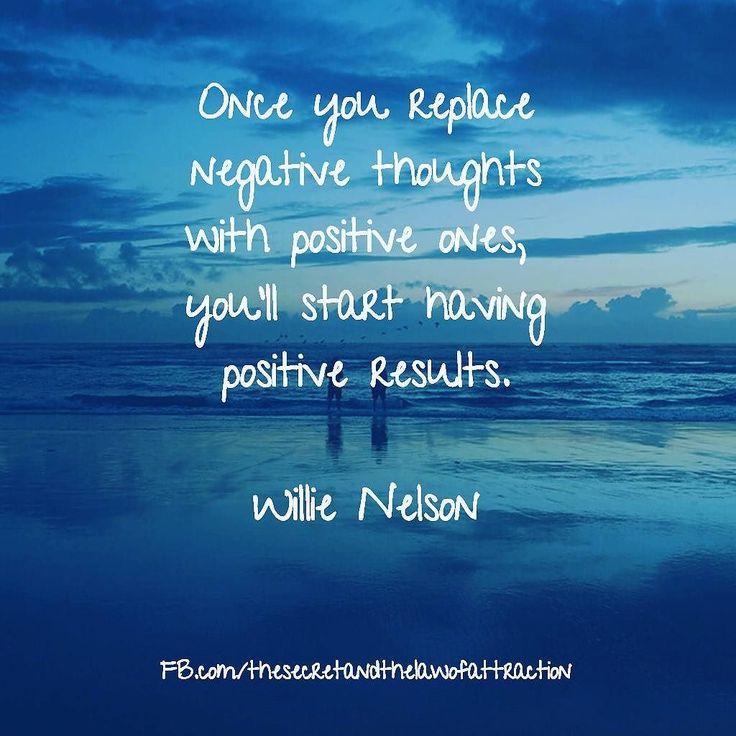 Then think about the emotions and feelings you experienced. Train yourself to live your ideal day as often as possible, and then you will see qualitative changes in yourself after a while.
Then think about the emotions and feelings you experienced. Train yourself to live your ideal day as often as possible, and then you will see qualitative changes in yourself after a while.
- Manage your thoughts and emotions.
Negative emotions and thoughts suck all life energy out of us. But these same thoughts are born in our head, so we can learn to control them. A person is able to manage and control his own thoughts at any moment of life, but for this you need to practice. By the way, it's not as difficult as it might seem. Step-by-step instructions for developing emotional intelligence are in the free Emotional Intelligence course.
- Write down 5 positive things.
This is a fairly well-known technique and really working. You need to find 5 positive aspects in any event, preferably in the worst. And you will be surprised that even in the most hopeless situations you can find positive, emotional moments for yourself. You will also see the situation from the other side, find non-standard solutions and opportunities.




